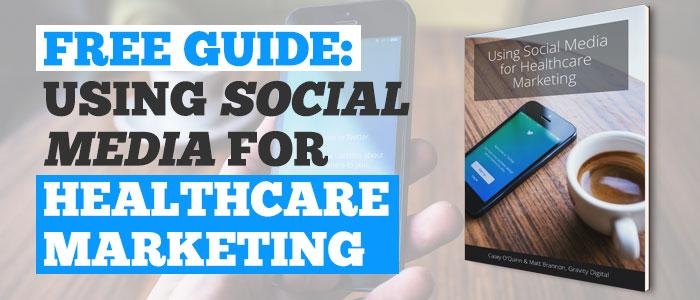The Roadmap: How to Start and Plan a Digital Marketing Strategy
Written by Matt Brannon, Gravity Digital.
![]()
The Foundation: Personas and Message
![]()
Before you get started, it’s important to know two things:
- Who are you trying to attract to your business? Who is your ideal customer? Spend some time documenting your Buyer Personas. You will want to understand what motivates them to purchase. What are their pain points, challenges, and goals? What are they looking for in a product or service like yours? The more fully you understand this person, the more successful you will be in all future marketing activities. Feel free to use our free Buyer Persona template if you need help getting started.
- What is your message? It’s hard to grab attention these days. What can you say to your buyer persona that will resonate with them and prompt engagement? What frustrations do people have with businesses like yours and how are you different? What is your secret sauce? If you have a long sales cycle, you need to consider how to speak to your personas at the top, middle, and bottom of the funnel. At the top, address the problem that they are experiencing and help them to understand it better. In the middle, Discuss and compare options and solutions for their problem. At the bottom (and only at the bottom) tell your persona how your business specifically is the best option and why.
Create a Good Experience on Your Website
![]()
Most of your digital marketing activities are going to have a goal of driving traffic to your website. It will all start to feel very futile if nothing happens when they get there. The goal of the website should be to have a visitor convert in some way: Schedule an appointment, buy a product, start a conversation with a sales rep, subscribe, or download a resource. We call this conversion. If your website isn’t converting, what is its purpose? Here are a few strategies to consider:
- Make it easy to get to the most important areas of your site. Remove clutter, use white space, and put the most important information and links front and center. In addition, tell your visitors what it is you want them to do when they arrive on a specific page. Place relevant calls-to-action in places where it is natural to take the next step in the buyer’s journey. Every page on your site should have a goal and a clear action that a visitor can take.
- Optimize your site for the search engines. There are agencies that specialize in nothing but search engine optimization, so this is a really broad and deep topic, but there are some basic things that you can do to make sure that your site is friendly for Google and help people find you online. First, identify what keywords you want to use. Keep it simple and focused around your main products and services. Moz Keyword Explorer is a great tool to help find your best keywords. Once you’ve identified your target keywords for each main page, place them in the meta data of your site. Sound scary? It’s not. There are great free tools that can do it for you. One of our favorites is the Yoast SEO plugin for WordPress. If you want to learn more about SEO, Moz is a great resource. Start with this post and then explore the blog. Rand Fishkin’s Whiteboard Fridays are outstanding.
- Collect data from your website visitors and regularly check it to improve your user experience and conversion rate. There are some free tools that can help with this. Google Analytics is the best source of data for your website and it comes with free courses to help you learn how to use it. You can also look at Hotjar to see heat maps of user activity. Once you’ve set up some funnels and goals in analytics and examined activity on your site, you will begin to see clear areas for improvement. We call this process Growth Driven Design, and you can download our free guide here. You should also check out Hubspot’s Marketing Platform. There are many price levels, but there is a free version that provides the basics for capturing, tracking, and converting leads.
- Make it look good on mobile. “Responsive design” was once an option that web designers offered. Now, 60% of searches are performed on mobile. If they aren’t already, the majority of people will soon be looking at your website on their phone, not their computer. Have a mobile-first mentality.
Be Found Through Directory Listings
![]()
Your website is your “home base” online, but companies with brick-and-mortar only locations see an average of 2.7x more traffic across third party services than their own website. If you operate your business out of a physical location, it is imperative that you “own” all of your directory listings. Some examples of directory listings are Yelp, Facebook, Foursquare, Snapchat, Google, Bing, Yahoo, Apple maps, Mapquest, Wellness.com, Vitals, DocSpot, etc. The reality is that they probably already exist, but may have bad information. These sites scrape data from across the web and use crowd sourced information and suggestions to create listings for your business. Google sees it as a positive sign if the data from these listings is consistent. If you claim all of your listings you can:
- Provide Consistent and Accurate information across the web and send positive signals to Google.
- Use these listings to engage with users and promote marketing messages.
- Monitor and manage your reputation by reviewing and responding to reviews.
Use Ads to Deliver the Right Message to the Right Person
![]()
Ads are still the biggest bang for your buck and the easiest way to get quick wins, but if you are like us, you really like some ads and hate others. The difference usually comes down to context. When we see ads that are helpful or relevant to our lives and interests, we like it. When we are bombarded by mass messages that are not relevant or helpful, they can be very annoying. The key to success is having a firm grasp on your personas and message. The rest is mechanics. There are a lot of ad networks available to marketers, but we recommend starting with the two most powerful:
- There are so many options available to marketers who use Google. You can run paid search ads, you can run ads on the Google Display Network of more than 2 million websites, you can run ads on YouTube, and you can even run ads in Gmail. What really makes this work is Google’s intelligence. They know user’s search history, so you can put your message in front of people with specific interests, people with active in-market searches for your type of product or service, people that visit specific websites, people who have been to your website, people who have viewed your YouTube videos, etc. Many businesses have tried advertising with Google and have failed because they didn’t take the time to learn how to use the tool.
- Facebook has 2 Billion monthly users, and like Google, they have a lot of data about their users and there are very advanced targeting options available to marketers. Facebook owns Instagram as well, so that network is available through the same platform. Like Google, Facebook has an academy where you can learn best practices that will lead to success.
In order to run ads, you will need some resources for design. Fortunately, design tools have become very democratized and easy to use.
Supercharge Your Brand with Content

Content is what separates the contenders from the pretenders. Consumers have come to expect that the brands they interact with online will have something to offer them before they begin a conversation. By providing content through your blog, email, newsletter, or your YouTube or social media channels, you are positioning yourself as an expert and building trust. Content also allows you to connect emotionally with consumers or demonstrate who you are as a brand. Use content to educate, inform, entertain, or inspire: Just remember to make it relevant to your persona’s life.
If your business has a long sales cycle, it is worth your time to learn about Inbound Marketing. Inbound is not right for every business, but if done correctly, it can create a snowball effect for your lead generation efforts. The best resource that we have found for learning the basics of Inbound is through the Hubspot Academy. Any sales team can benefit from the Inbound Sales certification in the Academy as well. In fact, if your sales team does not embrace the methodology and learn how to pursue inbound leads, you may find yourself frustrated by a huge pile of un-worked leads.
The Last Step: Build Relationships

If you’ve checked all of the boxes up to this point, then you are probably doing a very good job of maximizing all of your brand’s channels. If that’s the case, you may begin your digital conquest by nurturing relationships that can expand your reach. Here are three ways to explore:
- Depending on your type of business, public relations may be a logical next step. By reaching out to news outlets, you may be able to get some free coverage that can connect you with new audiences. You will need to have a good story to tell in order to attract this kind of attention.
- Influencer marketing is another way that your brand can reach new audiences. A little research will be required to find out who the top voices are online for your industry. Who are your personas engaging with in their newsfeed? Once you’ve identified these influencers, reach out and ask about collaboration opportunities.
- B2B businesses should look into Account Based Marketing and Account Based Sales.
We have a saying when we onboard a new client: “Begin as you mean to go”. If you are just starting your digital marketing efforts, keep this idea in front of you. Start by knowing your personas and your message, build a great website that converts, drive traffic, and build relationships. Know what the goal is for each action that you take and track your results. Keep learning. Consumer behavior and technology change rapidly, so keep educating yourself and stay relevant.
Matt joined Gravity Digital as the Marketing Director in 2013. He immediately connected with the company vision and values, and played an integral role in Gravity Digital’s transition from a traditional ad agency to an inbound healthcare marketing agency.
Follow Matt Brannon: LinkedIn | Twitter
This article was originally published on Gravity Digital’s blog.
Hear what tools and strategies your healthcare marketing & communication peers are using and why at the upcoming:
2nd Storytelling for Healthcare Marketing & Communications
Strategies to help you uncover & deliver content that will engage, influence, and educate your audiences and add value to your organization
March 20 – March 22, 2018 | Philadelphia
Comments are closed.
